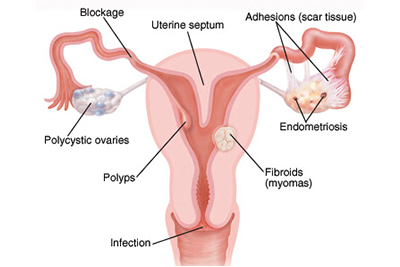Treatment Options For Infertility: Surgical Procedures
Treatment Options For Infertility: Surgical Procedures

Surgical procedures that may be used to investigate fertility problems and assist with fertility includes:
(A) FALLOPIAN TUBE SURGERY
If your fallopian tubes have become blocked or scarred, perhaps as a result of pelvic inflammatory disease (PID), you may need surgery to repair the tubes. Surgery can be used to break up the scar tissue in your fallopian tubes, making it easier for eggs to pass along them.
The success of the surgery will depend on how damaged your fallopian tubes are. One study found 69% of women with the least damaged tubes had a live birth after surgery. Other estimates for live births in women following surgery are 20–50%. Possible complications from tubal surgery include an ectopic pregnancy (when the fertilised egg implants outside of your womb).
Between 8–23% of women may experience an ectopic pregnancy after having surgery on their fallopian tubes.
(B) LAPAROSCOPIC SURGERY
It is often used for women who have endometriosis (when parts of the womb lining start growing outside of the womb), to destroy, or remove cysts (fluid-filled sacs). It may also be used to remove submucosal fibroid ie laparoscopic myomectomy (small growths in the womb).
Here a small incision is made in the woman’s abdomen. A thin, flexible microscope with a light at the end (laparoscope) is inserted through the incision. The doctor can then look at internal organs, take samples and perform small operations. For women with endometriosis, laparoscopy removes implants and scar tissue, reducing pain and often aiding fertility.
In women with PCOS, laparoscopic ovarian drilling can be used if ovulation medication has not worked.
(C) SURGERY FOR EPIDIDYMAL BLOCKAGE
The epididymis is a coil-like structure in the testicles that helps to store and transport sperm. Sometimes the epididymis becomes blocked, preventing sperm from being ejaculated normally. If this is causing infertility, surgery to correct the blockage can be performed.
Surgical extraction of sperm may be an option for men with:
• an obstruction which prevents the release of sperm, such as an injury or infection
• a congenital absence of the vas deferens (men born without the tube that drains the sperm from the testicle)
• a vasectomy biopsy of the testicular tissue after making a small incision in the scrotal skin.
Both procedures only take a few hours and are carried out as outpatient procedures under local anaesthetic. You will be advised on the same day about the quality of the material collected and whether there are any sperm present or not. Any material with sperm will be frozen and placed in storage for use at a later stage. If surgical retrieval of sperm is successful, usually enough sperm is obtained for several cycles of treatment (if required).
(D) VARICOCELE: If there is a varicose vein in the scrotum, it can be surgically removed.





